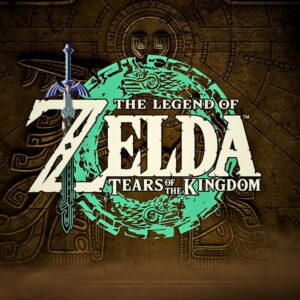The Holy Grail: A Fan Unearths a Sealed Misprint Pokémon Game Worth Thousands
Popular Now
 Stumble Guys
Stumble Guys
 Roblox
Roblox
 Grand Theft Auto V
Grand Theft Auto V
 NBA 2K24
NBA 2K24
 Poppy Playtime
Poppy Playtime
 Free Fire
Free Fire
 Sonic the Hedgehog™ Classic
Sonic the Hedgehog™ Classic
 PUBG Mobile
PUBG Mobile
 Genshin Impact
Genshin Impact
 FIFA 23
FIFA 23  The world of video game collecting has been set abuzz by a remarkable discovery. A fan recently stumbled upon a sealed, first-edition copy of Pokémon Blue with an incredibly rare and valuable misprint on its packaging. The find, which had been sitting in a closet for nearly two decades, is a powerful reminder of the hidden treasures that can exist within personal collections.
The world of video game collecting has been set abuzz by a remarkable discovery. A fan recently stumbled upon a sealed, first-edition copy of Pokémon Blue with an incredibly rare and valuable misprint on its packaging. The find, which had been sitting in a closet for nearly two decades, is a powerful reminder of the hidden treasures that can exist within personal collections.
The Accidental Discovery of a Pokémon Classic
The story, which unfolded on social media, began with Reddit user SausageNPeppers, who shared a picture of a pristine, sealed copy of the classic Game Boy title. The game, a cherished Christmas gift from 17 years ago, had never been opened or played, its value preserved by a simple twist of fate. While the discovery of a sealed retro game is noteworthy in itself, it was the keen eye of fellow fans that elevated this find into a truly monumental event.
Upon closer inspection, eagle-eyed collectors pointed out a critical detail on the back of the game’s box. The text, which should have described the features of Pokémon Blue, instead erroneously referred to the game as Pokémon Red. This unique and highly sought-after manufacturing error is a known variant among collectors, who have affectionately nicknamed it the “Red text” misprint. This specific misprint is a known quirk of the earliest English-language boxes, making it a true artifact of the game’s initial production run.
 Understanding the Value of Game Misprints and Errors
Understanding the Value of Game Misprints and Errors
The discovery has sparked a renewed interest in the market for misprinted games and other collectibles. Much like the lucrative world of misprinted Pokémon TCG cards, a video game’s value can skyrocket due to a production error. The rarity and severity of the misprint are key factors. A slight smudge or minor cosmetic flaw may only add a small premium, but a significant, easily identifiable error—like the one found on this Pokémon Blue box—can command astronomical prices.
Several factors contribute to the high value of such misprints:
- Scarcity: Manufacturing errors are, by their nature, unintentional and quickly corrected. This means that only a small number of affected items ever make it to the market, creating an extremely limited supply.
- Uniqueness: The “Red text” misprint on Pokémon Blue is a well-documented and unique anomaly. Unlike some misprints that may be subjective, this one is a clear and verifiable error.
- Condition: The fact that the game found by SausageNPeppers is sealed and in excellent condition dramatically increases its value. A sealed copy is the pinnacle of game preservation, and when paired with a rare misprint, it becomes a “holy grail” for collectors.
The find underscores the growing importance of game preservation and the value of keeping vintage gaming items in their original state.
The Lucrative World of Pokémon Collectibles
This recent find is just the latest example of the booming market for Pokémon collectibles. While most people are familiar with the high prices commanded by rare trading cards—such as the “No Rarity” Charizard or the “No Damage” Ninetales—the video game market also has its share of valuable items. A sealed, graded copy of a classic title can sell for thousands, or even hundreds of thousands of dollars.
For perspective, sealed copies of Pokémon Blue with a high-grade rating have been known to sell for significant amounts, with one WATA 9.6 graded copy of the “Red text” misprint recently listed on eBay for a staggering $126,000. While that particular listing has not yet found a buyer, it serves as a powerful indicator of the market’s potential. Even a lower-graded version of this specific misprint is likely to be worth a substantial sum.
 What to Do if You Find a Misprint?
What to Do if You Find a Misprint?
If this story inspires you to go through your own collection, here are a few tips for identifying a potentially valuable item:
- Research is Key: Before you do anything, take high-quality photos and research online. Check forums, collector websites, and auction sites for similar items. Look for subtle differences in text, art, or packaging.
- Look for Official Certifiers: Professional grading services like WATA, PSA, and CGC can authenticate and grade your collectible, which significantly boosts its value and marketability. A graded misprint is far more valuable than an ungraded one.
- Don’t Clean or “Restore”: Collectors prefer items in their original, untouched state. Cleaning or attempting to repair a box or cartridge can actually decrease its value.
- Be Wary of Fakes: The high value of these items has led to an increase in counterfeit goods. Educate yourself on the telltale signs of a fake, such as incorrect fonts, missing trademarks, or poor print quality.
This incredible find serves as a compelling story in the gaming community, proving that even a simple item tucked away in a closet can hold an immense, unexpected value. For retro game enthusiasts, it’s a powerful reminder to check those dusty corners—you never know what kind of forgotten treasure you might uncover.









 Understanding the Value of Game Misprints and Errors
Understanding the Value of Game Misprints and Errors What to Do if You Find a Misprint?
What to Do if You Find a Misprint?